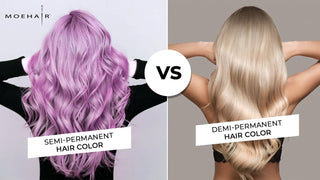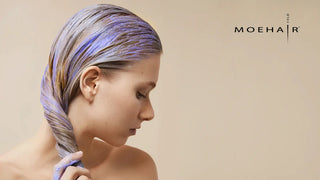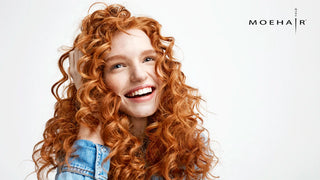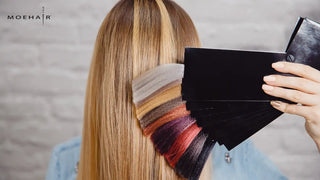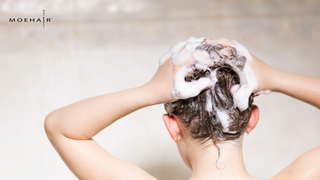 Table of contents
Table of contents
Walk into any salon or browse the haircare aisle, and you’ll notice the buzzwords: toner, dye, developer, gloss. They’re everywhere, printed across boxes and bottles promising new hair makeovers. And yet, one question remains surprisingly common: What’s the difference between hair toner and hair dye? While the two often work hand-in-hand in the coloring process, they’re far from interchangeable. Let’s break it down once and for all.
What is Hair Dye?
Hair dye refers to any chemical formulation designed to permanently or temporarily alter the natural pigment of the hair shaft. It functions by opening the cuticle layer and either depositing or removing melanin to instill a new hue. Hair dyes come in several distinct types, each varying in permanence and purpose.

1. Permanent Hair Dye
This type of dye uses a combination of ammonia and an oxidizing agent, typically hydrogen peroxide, to penetrate deep into the hair cortex. The ammonia lifts the cuticle, allowing the peroxide to strip natural pigment, after which synthetic dye molecules are deposited. This is the most transformative and long-lasting form of hair dye, ideal for gray coverage or dramatic color shifts.
2. Demi-Permanent Hair Dye
Ammonia-free and activated with a lower volume developer, demi-permanent dye deposits color without significantly altering the natural pigment. It offers a gentler alternative for enhancing or deepening color, blending grays, or adding tonality, with results that fade gradually over 20–30 washes.
3. Semi-Permanent Hair Dye
Semi Permanent Hair Color/dye lacks a developer and does not penetrate the hair shaft. Instead, it coats the outer cuticle with pigment. While it delivers vibrant, high-shine results, the effect is short-lived, typically washing out after 6–12 shampoos. It’s an excellent option for experimental color or gloss-like effects.
What is Hair Toner?
Hair toner is a color-balancing product used to neutralize or enhance specific tones within already lightened or colored hair. Unlike dye, it does not fundamentally alter the hair’s underlying color. Instead, it works on a more refined level, targeting unwanted undertones (like brassiness or yellowness) and enhancing dimension and shine. Toners are typically diluted, no-peroxide formulas that can be clear or tinted.
Types of Hair Toners

- Purple Toner: Cancels out yellow tones - ideal for platinum blondes or silver shades.
- Blue Toner: Neutralizes orange undertones in darker blondes and light brunettes.
- Gloss Toner: Provides translucent color while boosting shine and sealing the cuticle.
- Demi-Permanent Toner: Deposits tone with more longevity than glosses and is often used in professional salon applications.
Hair Toner vs. Hair Dye
| Aspect | Hair Dye | Hair Toner |
|---|---|---|
| Primary function | Alters natural hair color by changing the pigment | Adjusts tone of previously colored or lightened hair |
| Penetration level | Deep penetration into the cortex of the hair shaft | Shallow penetration - works within or slightly beneath the cuticle |
| Chemical agents | Typically includes ammonia and other oxidizing agents | Usually contains low or no ammonia |
| Longevity | Semi-permanent to permanent | Temporary to demi-permanent |
| Uses | Gray coverage, color transformation, root retouch | Post-bleach neutralization, toning highlights, gloss enhancement |
When to Use Hair Toner vs. Hair Dye?
Use hair dye when:
- You’re covering grays.
- You’re changing your base color (e.g., from black to auburn).
- You’re growing out roots and need a color match.
- You want to go darker or shift hues entirely.
Use hair toner when:
- You've lightened your hair and need to eliminate brassiness.
- You want a cooler, ashier, or warmer finish without changing your base color.
- You're refreshing faded highlights or balayage.
- You need to correct the tone without further chemical damage.
Why Toner Is Essential After Bleaching
Bleaching lifts pigment from the hair shaft but doesn’t determine the final color tone. Without a toner, bleached hair often appears overly warm or uneven, depending on the starting level and underlying undertones. Toner becomes the crucial intermediary step that refines the outcome, creating a balanced, cohesive finish. Additionally, toner can imbue softness, increase shine, and improve porosity, giving bleached hair a more polished, healthy appearance.
Do You Always Need Both?
Not necessarily. The use of toner and dye depends entirely on the goal. However, in many professional coloring services, both are used in tandem to achieve dimension and accuracy. For instance:
- A full head of highlights may require a toner to even out the undertones.
- A brunette going to a cool espresso tone may need both a dye and a toner to suppress red undertones.
While dye builds the base, toner perfects it. The synergy of both ensures longevity, aesthetic consistency, and a more tailored color experience.
FAQs
1. Is hair toner the same as hair dye?
No, toner and hair dye are not the same. Hair dye changes the natural color of your hair by depositing pigment into the hair shaft, often using a developer. Toner, on the other hand, adjusts or neutralizes specific undertones in previously dyed or bleached hair without drastically changing the base color.
2. Can you use toner without bleaching your hair?
Toner is most effective on pre-lightened or naturally light hair. While it can slightly adjust tone on darker hair, it won’t have much visible impact unless the hair is light enough to reveal unwanted undertones.
3. How long does hair toner last?
Toner typically lasts between 2 to 6 weeks, depending on your hair's porosity and how often you wash it.
4. Will toner lighten your hair color?
No, toner does not lighten hair. It works by depositing pigment to adjust tone. If you want to go lighter, you’ll need to bleach or dye your hair with a lifting agent first.
References
https://www.popsugar.com/beauty/hair-dye-toner-difference-48531552
https://www.researchgate.net/publication/276177013_Types_of_Hair_Dye_and_Their_Mechanisms_of_Action
How we reviewed this article:
Our experts continually monitor the fashion and beauty space, and we update our articles when new information becomes available.
-
Current Version
-
April 25, 2025
Written and Edited By -
Saloni Sachdeva is a lifestyle writer with 5+ years of experience in writing in the beauty and haircare industry.


















